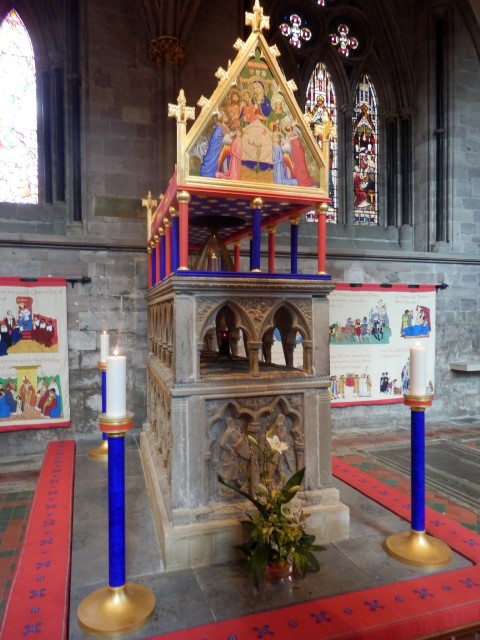
Shrine of St. Thomas de Cantilupe at Hereford Cathedral
In 1315 a royal charter was granted to hold a weekly market and fair on St Bartholomew’s day in Hambleden. There was a Bishop’s ‘Palace’at Fingest in the 14th Century.
The parish saw action during the English Civil War when the manor at Greenlands was besieged for 6 months by Parliamentarians and subsequently demolished.
The oldest surviving building in the parish is the church at Fingest, which dates back to the 12th Century. There are buildings from the 17th and, more rarely, the 15th & 16th Century, to be found in most of our villages. The manor house in Hambleden was built in 1604 and was the birthplace of Lord Cardigan, who led the charge of the Light Brigade during the Crimean war. It later became the home of the W.H. Smith family (of newsagent and bookseller fame). This manor house replaced an earlier one to the south of the village which then served as the rectory from 1627 until 1938 and is now a private house known as Kenricks.
We started by saying that not much has changed in the parish but, certainly in the twentieth century, there has been a great deal of change. Mains water and electricity arrived in the 1930s, although main drainage did not arrive until 1957 - and then only to some parts of the parish.